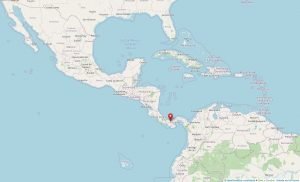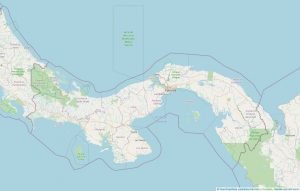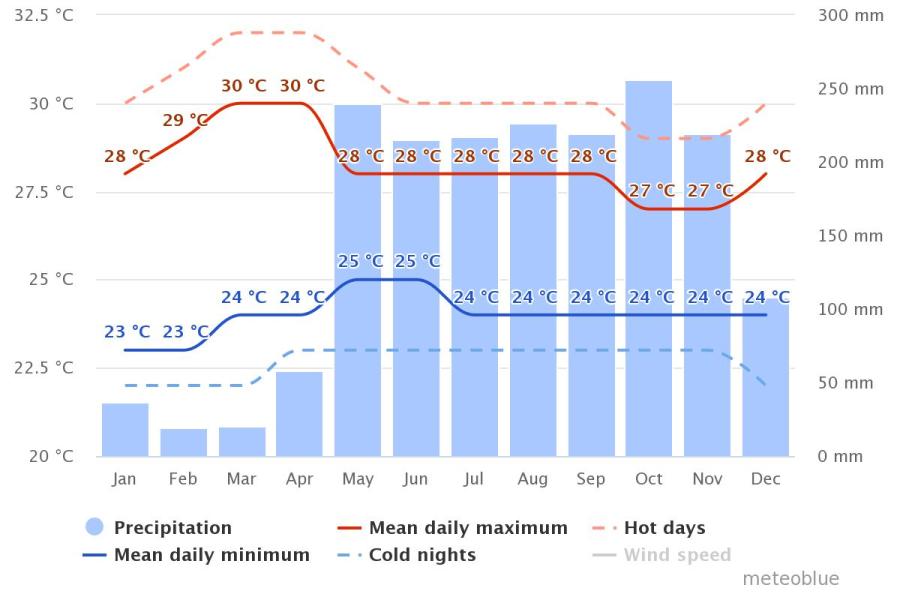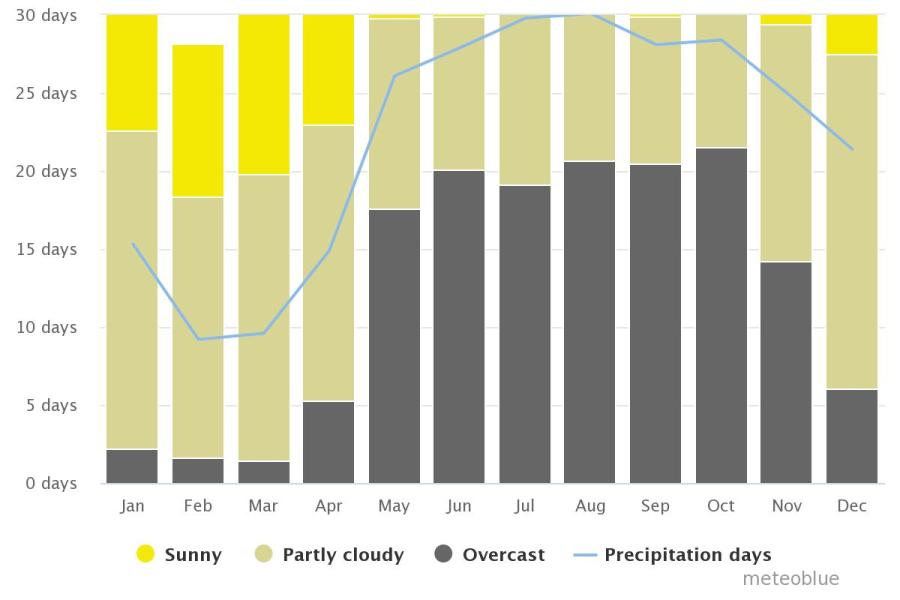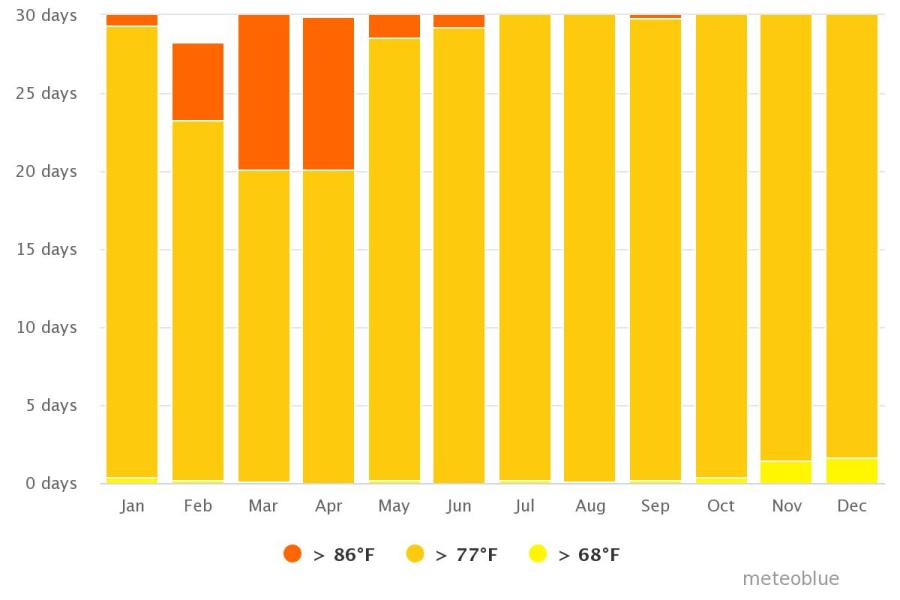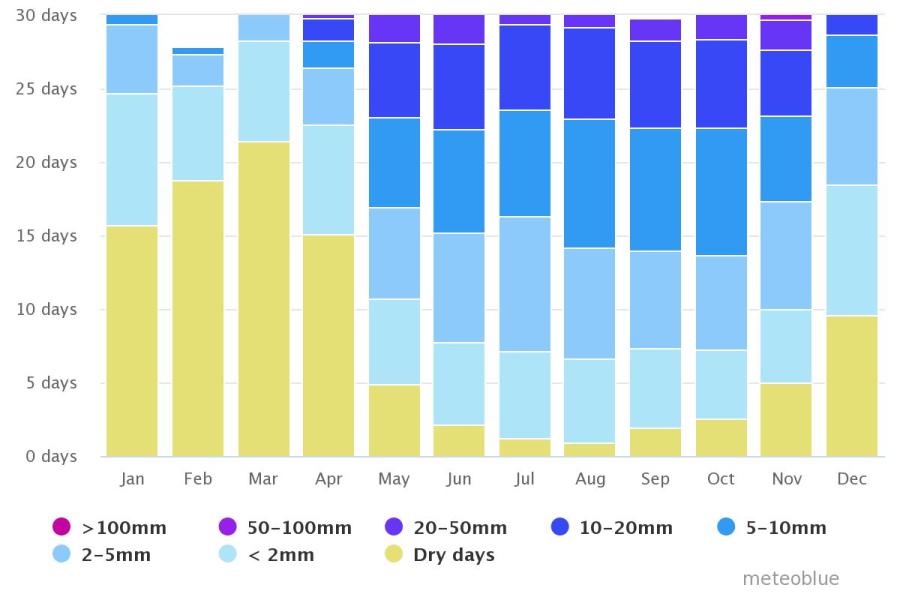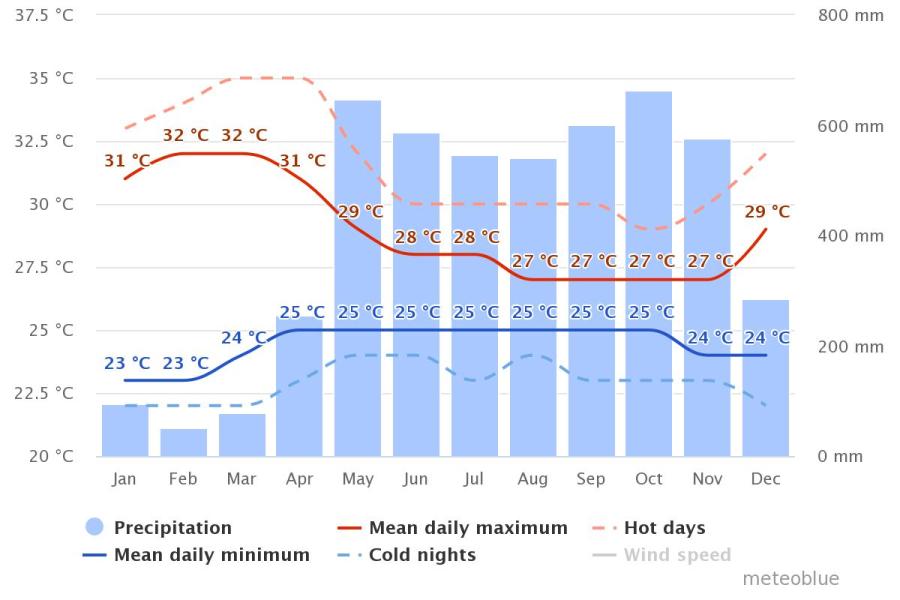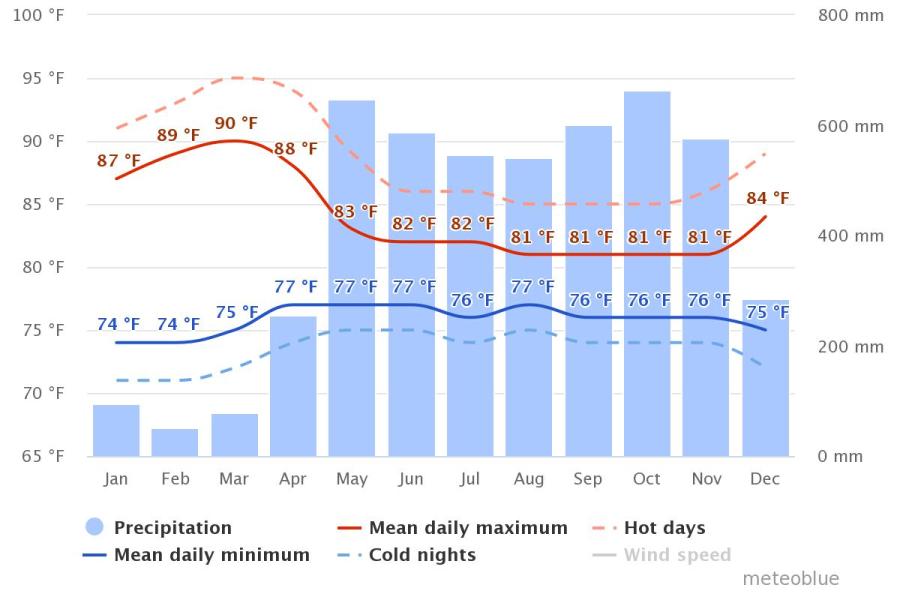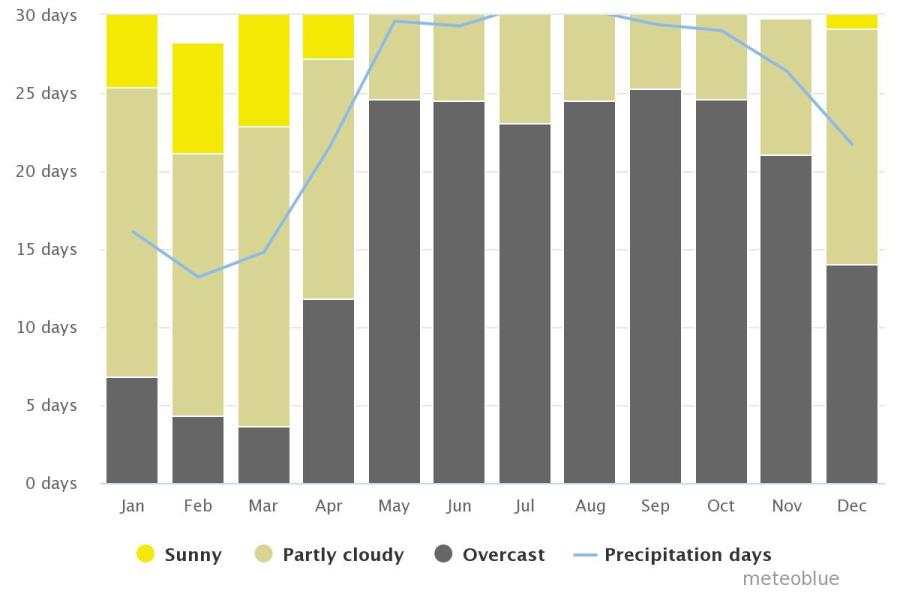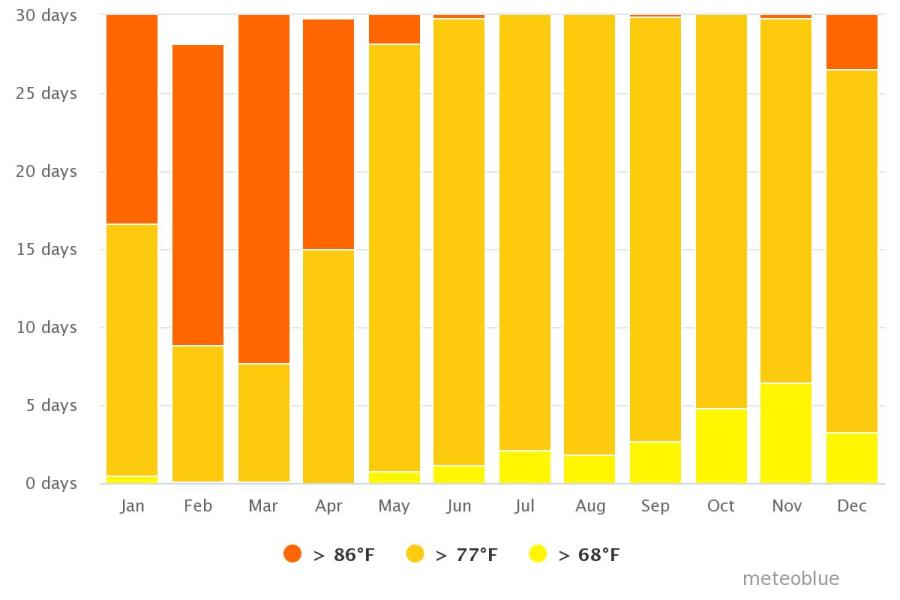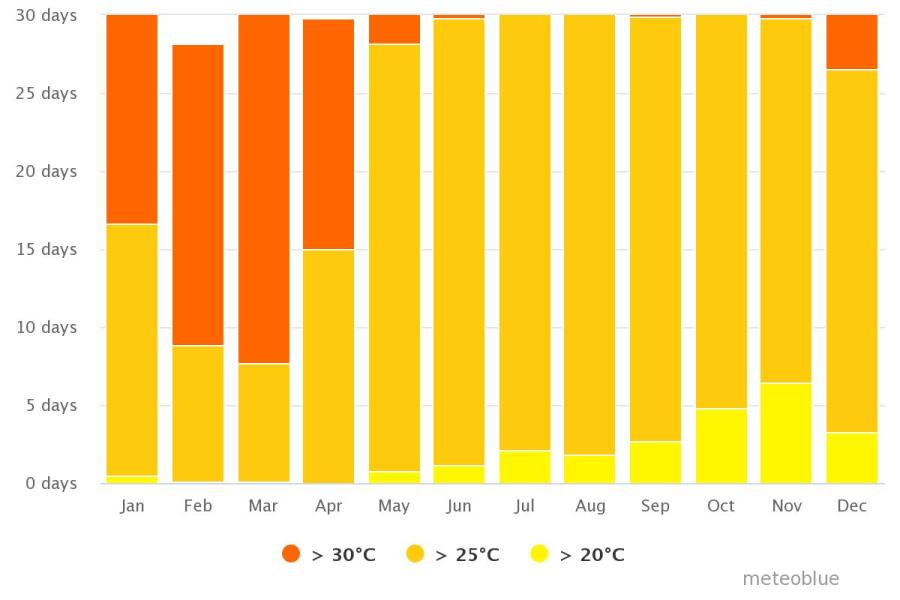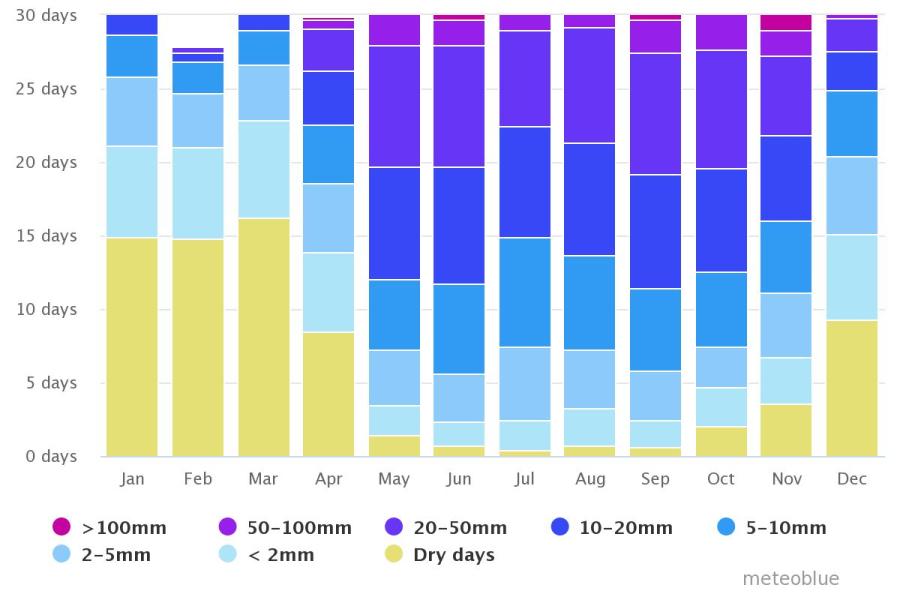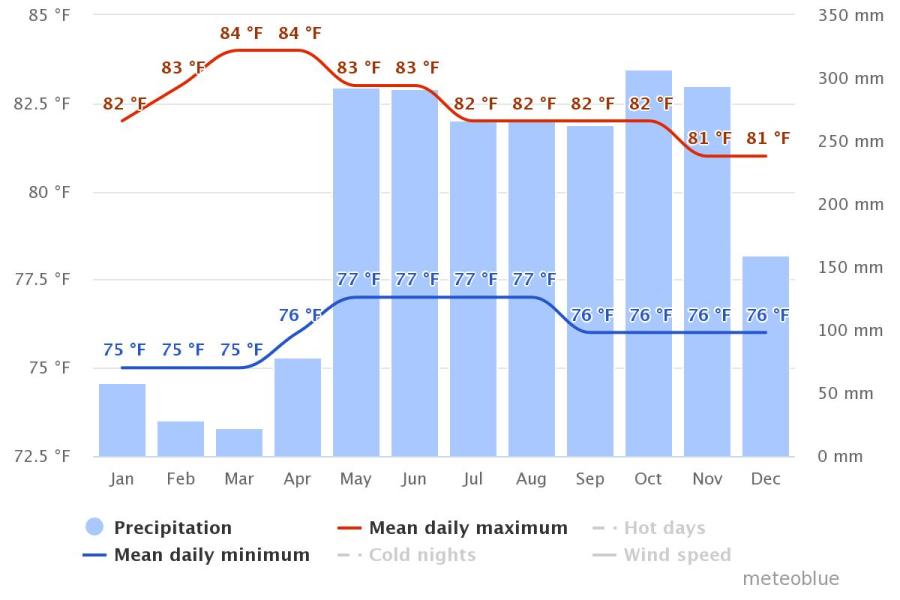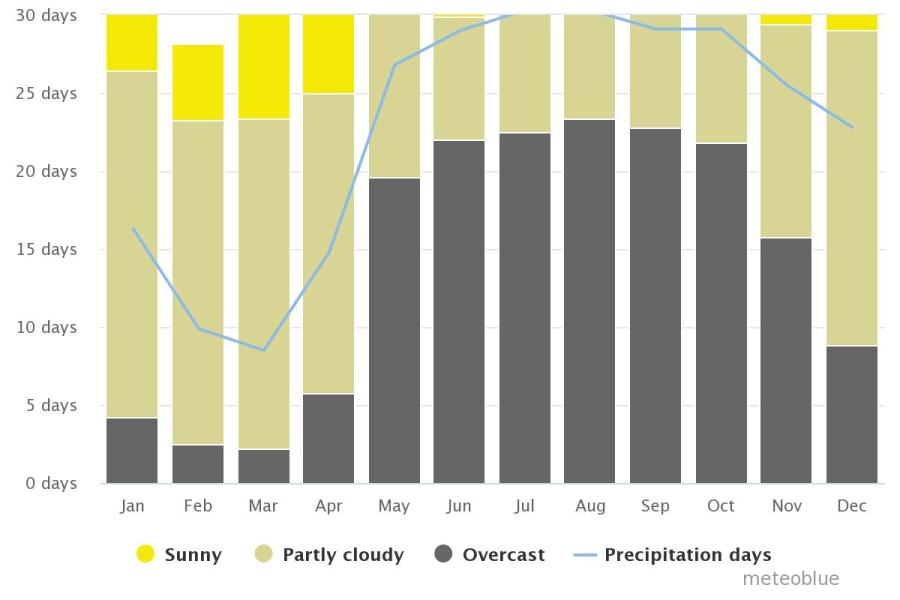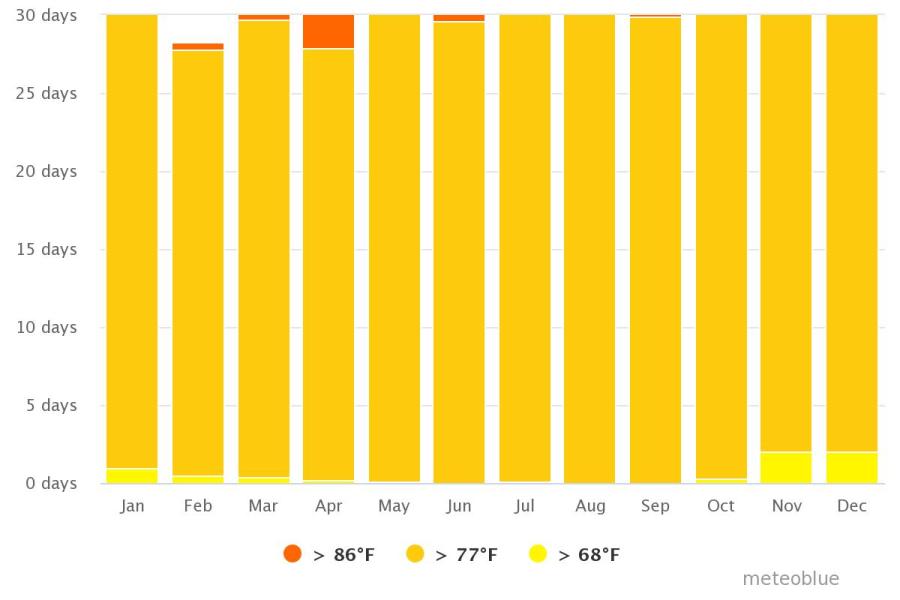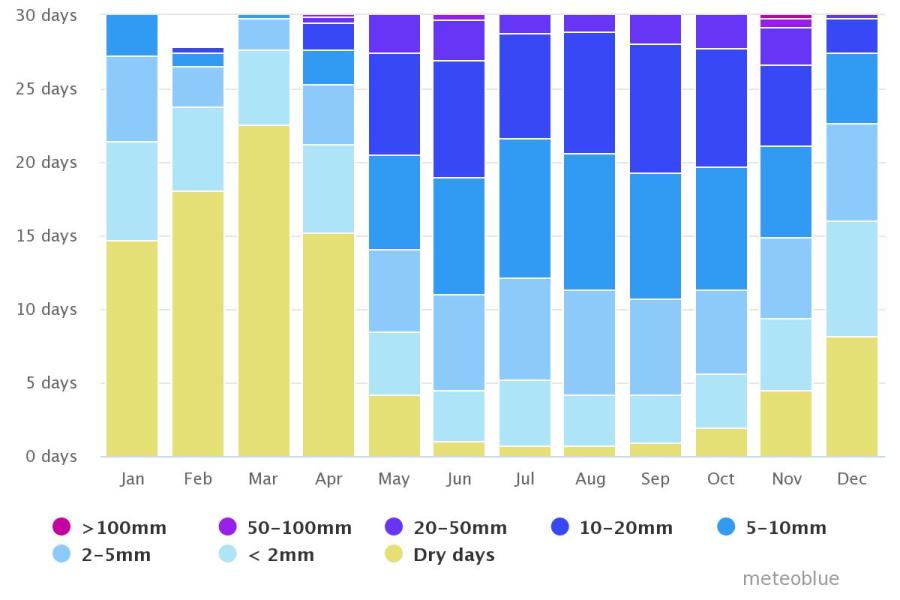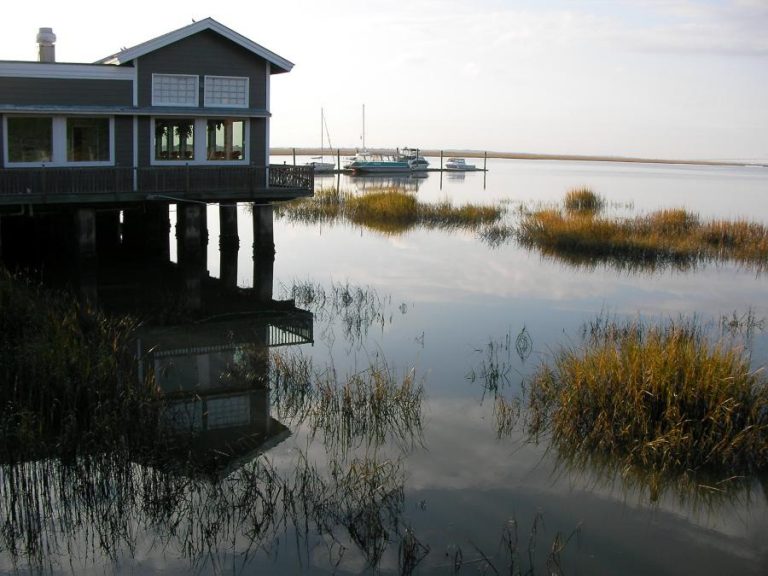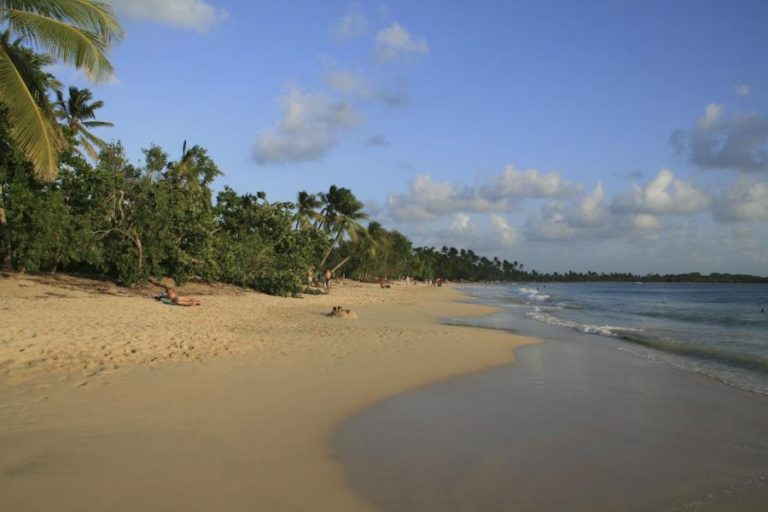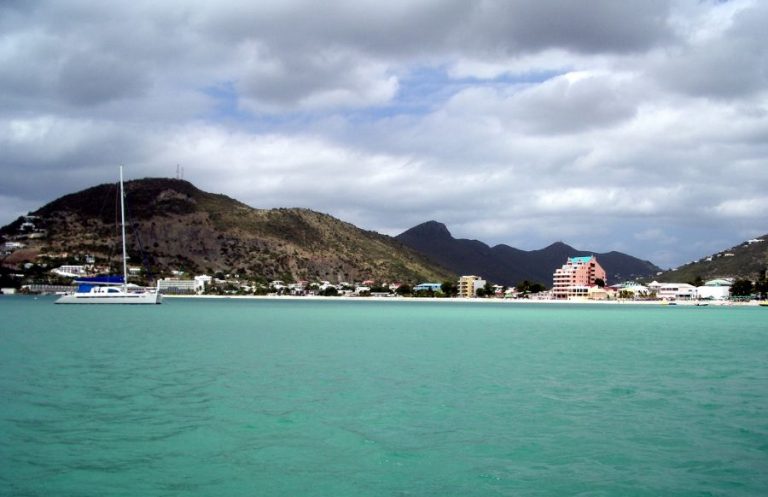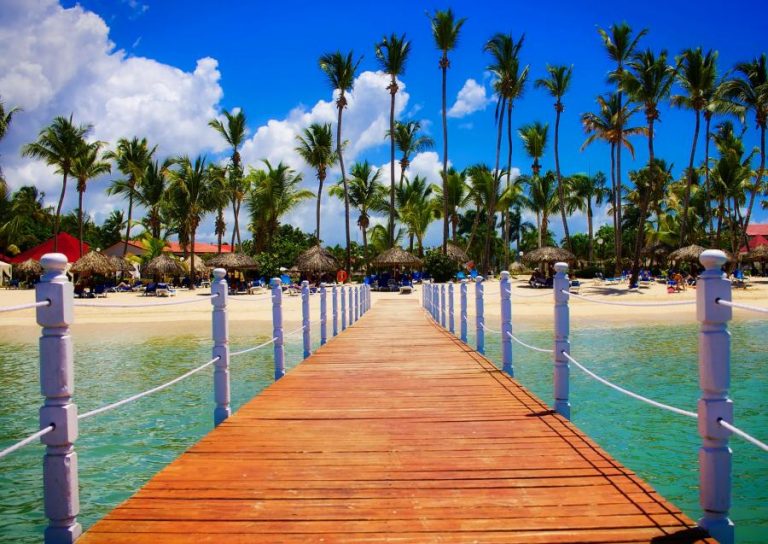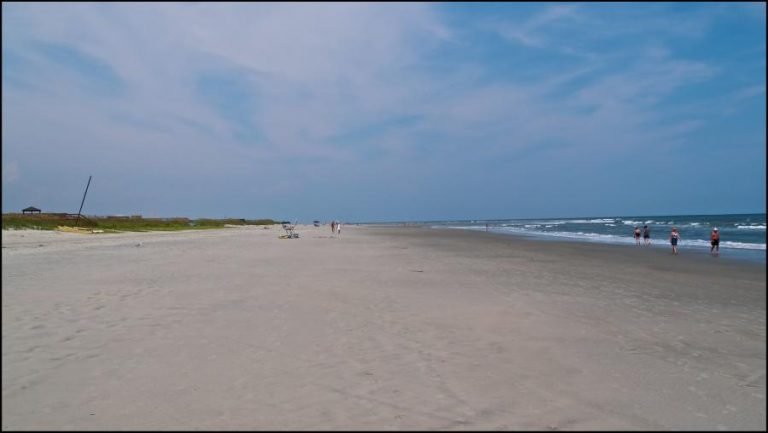Spend your fall, winter, or spring in Panama: Is Panama a good snowbird location?
Panama is a warm tropical country in Central America. It is particularly famous for its 48 Miles (77 km) canal that connects the Pacific Ocean with the Atlantic Ocean. The Canal attracts millions of people each year that are eager to witness the engineering marvel. Its favorable tax laws and affordable lifestyle are great attractions for tourists.
Asides from its resourceful canal, Panama is also known for its beautiful landscapes, rich culture, and a plethora of tourist activities. The official language is Spanish, but English is widely spoken among the locals.

Contents
- 1 Why should people stay in Panama
- 2 Climate
- 3 Safety
- 4 Communication, internet, and cellphone in Panama
- 5 Wintersun Locations in Panama
- 6 Things to see in Panama
- 7 Activities in Panama in the fall, winter, or spring
- 8 Shopping + Restaurants. Are they open in the fall, winter, or spring?
- 9 Transport
- 10 Health
- 11 Accommodation
- 12 Packing List
Why should people stay in Panama
With the Panama Canal, Panama has become a hotspot for global shipping and cruise ships. You can travel from the Pacific Ocean to the Atlantic in 3 hours. There is so much to explore in Panama apart from the Panama canal, like golf, watersports, casinos, beach resorts, sports fishing, snorkeling, fabulous bird watching, rainforest tours, white water rafting. The country is still fairly new to the waves of winter visitors and finding short-term accommodation might be challenging. However, Panama is quickly adjusting to the potential of the winter tourism market.
Panama city is a growing urban city with lovely neighborhoods, towering buildings, many other ex-pats, and lots to see or do. There is also a very affordable lively restaurant scene that offers some amazing delicacies. You can also enjoy world-class shopping and nightlife. Throughout your stay, the efficient transport system makes it easy for you to get around the country.
Climate
Panama has a tropical climate all year round in the lowlands and a temperate climate in the highlands. The average annual temperature at sea level is 27°C (81°F). Panama experiences two seasons; Dry season from December through April, and Rainy season from May through November.

For more climate information visit Meteoblue
Safety
While Panama is a peaceful country, tourists are advised not to flaunt cash around, or visit secluded areas alone or locations that have a notable crime rate. Also, be watchful of the cars you get into as taxis.
Communication, internet, and cellphone in Panama
Most of the people in Panama City speak Spanish and English too, so communicating would not be a difficult task. But the further you go inland, the fewer English-speaking people you will see, so speaking some Spanish is advised in those regions.
You can use your mobile phone in Panama without problems, but it is advised to buy a local sim card for your phone, as the roaming cost can be very high.
Wintersun Locations in Panama
- Playa Blanca: The southern Panama coastline has got more and more popular in recent years. You will find some of the best resorts with white sand beaches. Only 2 hours from Panama City.
- Playa Coronado: Only an hour from Panama City and an easy location to rent a house. You will find many ex-pats there and there are several supermarkets and many restaurants. There is also a fairly new hospital.
- San Carlos: Not far from Playa Coronado with fewer ex-pats, but close to the supermarkets and hospital.
- Panama City: If you like a bigger city, in or around Panama City you will find many great places. Enjoy the Cinta Costera promenade with its views of the city skyline. Walk from the Banking District to colonial Casco Viejo and experience some of the city's best features along the way.
Things to see in Panama
- The Panama Canal: The Panama Canal is the main attraction for many tourists. You can get to see the 48 Miles (77 km) waterway that connects the Atlantic Ocean with the Pacific Ocean.
- Panama Viejo: This is the remaining part of the original Panama City, the former capital of the city. It is also known as 'Panama la vieja'. It is located in the current capital's suburbs. It has been a world heritage site since 1997 along with the historical district of Panama.
- Casco Antiguo: The Casco Antiguo is the historic district of Panama City. It is also known as Casco Viego or San Felipe. It was built in 1673 after the original Panama city was almost destroyed by pirates in 1671. There are also Churches & Cafes within the district.
- Bridge of the Americas: The Bridge of the Americas is a road bridge in Panama that connects the North and South American landmasses. The bridge spans the Pacific entrance to the Panama Canal and was completed in 1962.
- Metropolitan National Park: It is a park in Panama City. It is the only wildlife refuge in the city and various bird species and the Geoffroy's Tamarin could be seen there
- Amador Causeway: The Amador Causeway is a long stretch of island connector with scenic views of the ocean.
- Biomusco: Biomuscois a museum designed by the renowned architect Frank Gehry. It is located on the Amador Causeway in Panama City. The museum focuses on Panama's natural and cultural history, and also emphasizes the role of humans in the 21st Century.
- Panama Canal Museum: The museum is devoted to the history of the construction of the Panama canal.
- Iglesia de San José: This is a 1670s Church with a golden altar.
- Ocean Sun Casino.
- Plaza de Francia.
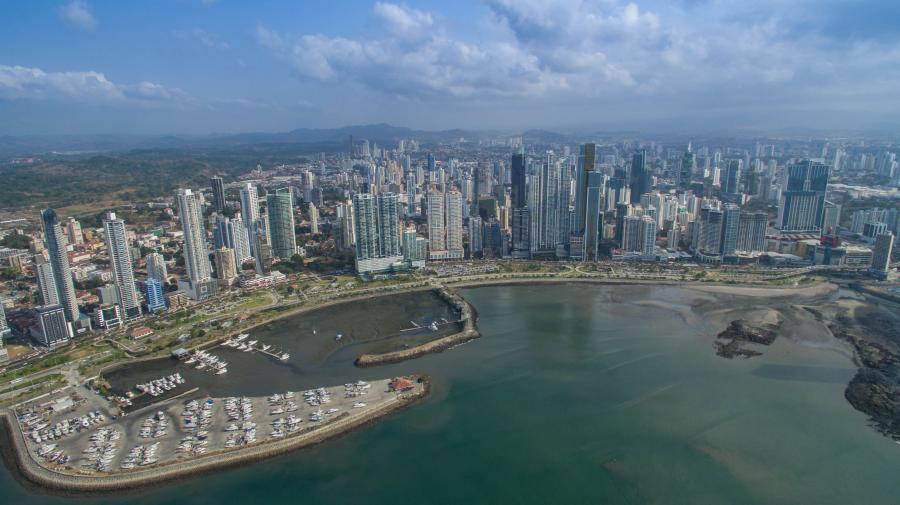
Activities in Panama in the fall, winter, or spring
- Visits or Tours to Nature reserves & parks: Panama is rich in lots of beautiful nature to explore and experience.
- Snorkeling.
- Visit one of the Museums.
- Exploring the food scene of Panama: there are lots of restaurants that make some amazing dishes that tourists should have a taste of while in Panama.
- Beach visits: The coastlines of Panama have lots of beaches that snowbirds can lay back on and take in the beautiful sun and the sound of the ocean.
- Shopping: shops across Panama will be open during the winter, so tourists can look around for a perfect souvenir to take back home or something for themselves.
- Golfing: If you enjoy playing golf, there are several courses in Panama city and not too far from the capital.
- Boat trips and excursions: in nice weather, you can take boat trips or excursions across the oceans.
- Fishing.
- Experience the nightlife: Panama has a vibrant nightlife, so you could enjoy the famous sultry Panama music and soak up the night scene.
Shopping + Restaurants. Are they open in the fall, winter, or spring?
Panama has a large number of restaurants and shops. Famous brands like Gucci, Prada, Hermes, Nike, Cartier, Ralph Lauren, Chanel, Micheal Kors, and many others have shops in Panama City. There are a couple of big malls like the Albrook Mall, Metro mall Panama, Megapolis outlets Panama and other outlets. However, some stores might not be open during winter.
You can also find different kinds of restaurants across Panama. They typically offer outdoor dining, late-night food, and great cocktails. Some restaurants have Spanish cuisine, seafood, takeaway food, American and European style dishes.
Please note that the further you go from Panama City or David, the less you will find good shopping opportunities and other conveniences.

Transport
Panama is a small country, and it has a very good transportation system. By taxis, buses, or small planes, it is quite easy to get around to most places quickly, and without stress. The roads around Panama are in great shape too. The country's main highway, the Interamericana (Interamerican Highway) is easy to navigate and it connects the west to the east.
If you are interested in the cheapest way to explore Panama, buses are the right choice. They are usually efficient and comfortable enough. Rental cars are perfect if you're interested in exploring Panama on your own. Visitors with their home country's license can drive for 90 days.
Domestic flights are the quickest way to get to many parts of Panama, especially remote areas like the San Blas Islands and Pearl Islands. The longest flight within Panama could take an hour maximum, but domestic flights make several stops along the way. Panama's main domestic airport is the Aeropuerto Marcos A. Gelabert, in Panama City. It is near the Albrook Mall and Bus terminal. It is also not far from Downtown. Most flights start and end here. There are also a reasonable number of international airports in Panama; the main airport is the Tocumen International Airport, while others Albrook Marcos A. Gelabert Airport, Scarlett Martinez International Airport, Enrique Adolfo Jimenez International Airport, Howard AFB, etc.
Panama has only one passenger rail line, the Panama Canal Railway. The line runs between Corozal (Just outside downtown Panama city) and Colon. The train ride gives good views of Panama and it runs parallel to the Panama Canal. It is advisable to have a taxi or tour guide waiting to pick you up at the Colon station because Colon is unsafe.
Generally, transportation in Panama is cheaper and more convenient than many people will expect and the country's small size is one of the main factors for this.
If you plan to rent a car please be aware that while you can stay in the country for 180 days, you can only drive with your U.S. license for 90 days.
Health
Panama has a quality healthcare system that is affordable. The hospitals and clinics are conveniently located across the country. The small size of the country makes it easy for you to reach a modern facility in no time at all, no matter where you live. Most of the doctors are internationally trained and can speak English.
Panama city has many facilities, and four of the major private hospitals in the region, are considered to be among the best. They include Centro Medico Paitocla, Hospital Nacional, Clinicia Hospital San Fernando, and Punta Pacifica (Affiliated with John Hopkins Hospital).
Dentistry in Panama is also a major attraction to the country. The facilities and doctors at these various clinics and hospitals across Panama are similar to the services you will get in the U.S or Canada.
The cost of healthcare is relatively on the low side.
Please note that the further you go from Panama City or David, the fewer medical services you will find. Also expect not many people to speak English in those regions.

Accommodation
- Panama is not short on apartments and rentals for long stays.
- Prices for apartments are expected to start from as low as $350 (approx. €328, £283, $480 CAD, $543 AUD) per month for a regular apartment.
- For around $875 (approx. €821, £709, $1200 CAD, $1359 AUD) monthly you can get an apartment in the city center.
- Apartments and homes that are luxurious with perks like a pool, amazing views, and other amenities, can be priced at $1000 (approx. €939, £810, $1372 CAD, $1553 AUD) to almost $2000 (approx. €1878, £1621, $2744 CAD, $3107 AUD) a month.
Packing List
- Weather: The fall, winter, and spring weather in Panama will normally be hot during the day and hot/warm during the night. Of course in the fall and spring it will be warmer than in the winter. You have to pack accordingly.
Other locations close to this location:
If you see this after your page is loaded completely, leafletJS files are missing.
If you have any additions, or comments on the content on this page, please use our contact form to let us know.
Detailed weather during the year for Panama
- Weather in Panama for January
- Weather in Panama for February
- Weather in Panama for March
- Weather in Panama for April
- Weather in Panama for May
- Weather in Panama for June
- Weather in Panama for July
- Weather in Panama for August
- Weather in Panama for September
- Weather in Panama for October
- Weather in Panama for November
- Weather in Panama for December
What to do during the year in Panama
- What to do in January in Panama
- What to do in February in Panama
- What to do in March in Panama
- What to do in April in Panama
- What to do in May in Panama
- What to do in June in Panama
- What to do in July in Panama
- What to do in August in Panama
- What to do in September in Panama
- What to do in October in Panama
- What to do in November in Panama
- What to do in December in Panama

